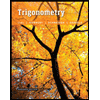Define f(x ) = Vx2 +1 and g(x) = 2 – x2. State the domain of (f + g)(x ). x # v2, –v2 - [-1, 00) (-x, 0) x + V2
Minimization
In mathematics, traditional optimization problems are typically expressed in terms of minimization. When we talk about minimizing or maximizing a function, we refer to the maximum and minimum possible values of that function. This can be expressed in terms of global or local range. The definition of minimization in the thesaurus is the process of reducing something to a small amount, value, or position. Minimization (noun) is an instance of belittling or disparagement.
Maxima and Minima
The extreme points of a function are the maximum and the minimum points of the function. A maximum is attained when the function takes the maximum value and a minimum is attained when the function takes the minimum value.
Derivatives
A derivative means a change. Geometrically it can be represented as a line with some steepness. Imagine climbing a mountain which is very steep and 500 meters high. Is it easier to climb? Definitely not! Suppose walking on the road for 500 meters. Which one would be easier? Walking on the road would be much easier than climbing a mountain.
Concavity
In calculus, concavity is a descriptor of mathematics that tells about the shape of the graph. It is the parameter that helps to estimate the maximum and minimum value of any of the functions and the concave nature using the graphical method. We use the first derivative test and second derivative test to understand the concave behavior of the function.
![### Domain of the Sum of Two Functions
**Problem Definition:**
Define \( f(x) = \sqrt{x^2 + 1} \) and \( g(x) = 2 - x^2 \).
State the domain of \( (f + g)(x) \).
**Options:**
1. **\( x \neq \sqrt{2}, -\sqrt{2} \)**
2. **\[ [-1, \infty) \]**
3. **\[ (-\infty, \infty) \]**
4. **\( x \neq \sqrt{2} \)**
5. **\[ (-\infty, -1] \]**
**Explanation of Functions and Domains:**
1. **Function \( f(x) \):**
\( f(x) = \sqrt{x^2 + 1} \)
- The expression inside the square root \( x^2 + 1 \) is always positive for all real numbers \( x \).
- Hence, the function \( f(x) \) is defined for all real values of \( x \).
2. **Function \( g(x) \):**
\( g(x) = 2 - x^2 \)
- \( g(x) \) is a quadratic function.
- This function is defined for all real values of \( x \), since there are no restrictions on the domain of \( g \).
3. **Sum of Functions ( \( f + g \)(x) ):**
For the function \( (f + g)(x) \), we consider the domain where both \( f(x) \) and \( g(x) \) are defined:
- Since both \( f(x) \) and \( g(x) \) are defined for all \( x \in \mathbb{R} \), their sum will also be defined for all real \( x \).
**Therefore, the domain of \( (f + g)(x) \) is:**
\[ (-\infty, \infty) \]
Select the third option:
\[ (-\infty, \infty) \]](/v2/_next/image?url=https%3A%2F%2Fcontent.bartleby.com%2Fqna-images%2Fquestion%2Fd24861ef-92b0-4cd8-8c54-2ac2200498ec%2F969472de-3f34-4e9d-bd01-554e2ee5d31b%2Ff14es4w_processed.jpeg&w=3840&q=75)
Step by step
Solved in 2 steps with 2 images







